The Lindo Theatre
Introduction
Text-to-speech Audio
This historic theater was built in the early 1920s and named "Lindo" to recognize the debate between Abraham Lincoln and Stephen Douglas which occurred a few blocks north of this location on August 27, 1858. The historic building has been remodeled many times, but has always been a theatre and recent remodels have sought to restore some of the historic architecture while also supporting modern technology and supporting accessibility. The Lindo is the last remaining theatre in Freeport, but was once one of many owned by John Dittman.
Images
Lindo's marquee as it stands today in 2023.
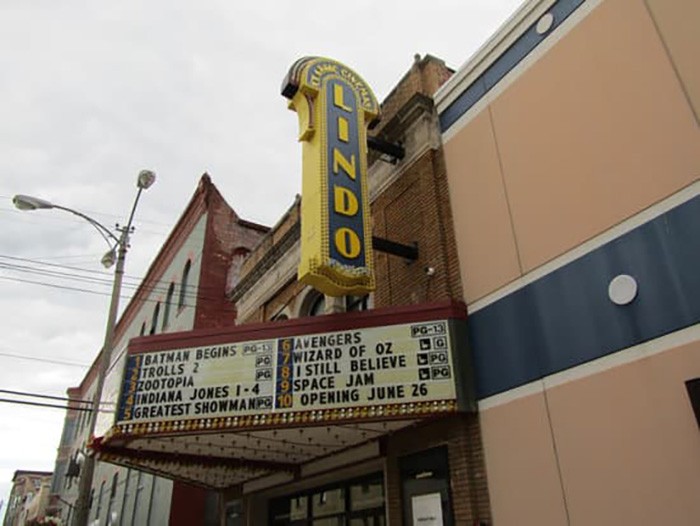
Lindo Theatre in 1939.
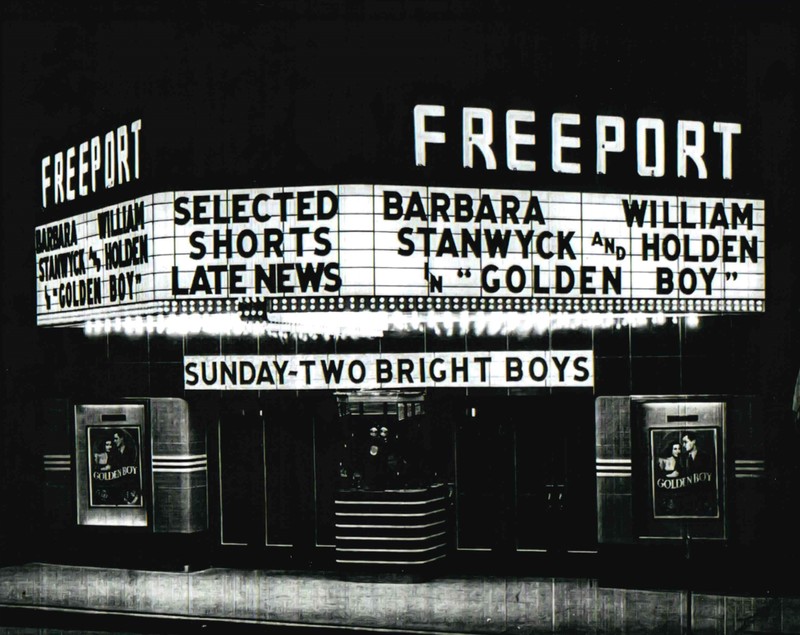
Lindo Theatre brochure.
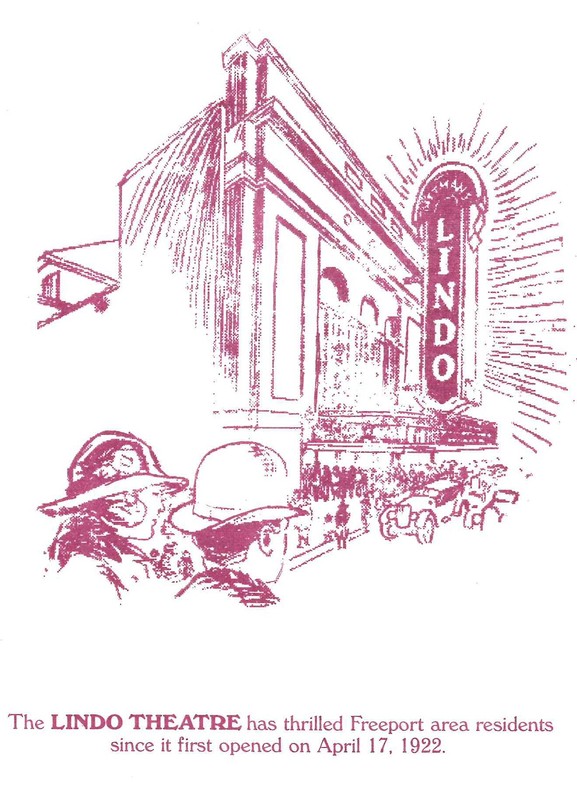
Lindo Theatre ad in the Freeport Journal Standard, September 1931.
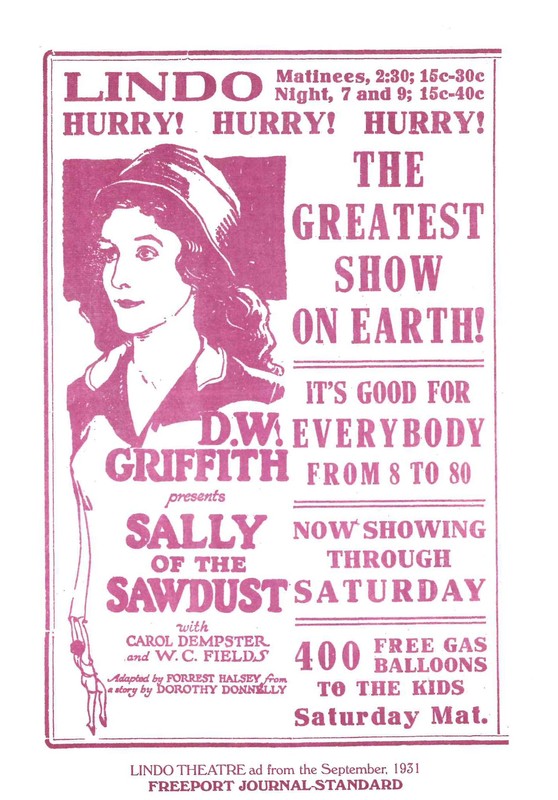
Sketch of the Lindo Theatre marquee sign.
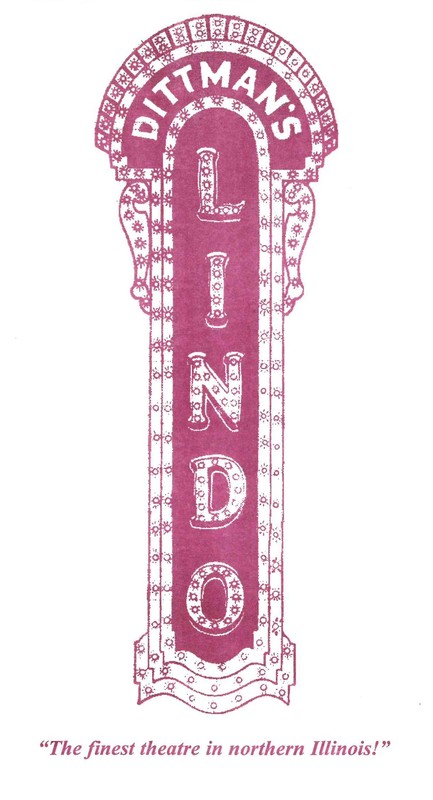
Backstory and Context
Text-to-speech Audio
The theater's name is a combination of Abraham Lincoln's and Stephen Douglas's last names-- a reference to the second of seven debates between the two Illinois politicians which occurred just a few blocks north of this location and is now the site of a historic-themed park that includes a sculpture of the two political leaders. The Freeport debate established what later became known as the Freeport Doctrine based on Douglas's suggestion that territories could not ban slavery outright as states could, but they could thwart its expansion by passing laws that made it difficult for slave owners to bring their enslaved into a territory. While Lincoln believed that territories could bar slavery, Douglas's response reflected the politician's attempt to walk a middle line that would allow him to be seen as a moderate and therefore win both Northern and Southern votes in the upcoming Presidential election. While both men had Presidential aspirations, Douglas's positions in the debates ultimately led to a loss of Southern support, leading to Lincoln winning the northern vote under the new Republican Party while Democrats who supported slavery or hoped to avoid the issue divided their votes between Douglas and other candidates.
The Lindo Theatre was designed by brothers C.W. Rapp and George L. Rapp in the early 1920s. Built and owned by John Dittman, the theatre opened on April 17, 1922. At this time the theatre had one room, seating 1200. A stage was built for vaudeville acts, and a Bennet pipe organ accompanied films. An orchestra played for the Lindo's opening night.
The theatre has been owned by many people throughout the century. Steve Bennis bought the Lindo in 1939, and it was later run by his children and grandchildren. The theatre was closed in 1983 due to low attendance but reopened in 1984 by Willis and Shirley Johnson. Under the Johnsons' ownership, the Lindo became a part of Classic Cinemas.
Soon after the Johnson's purchased the Lindo, the theater was divided into three screening rooms with walls designed to absorb sound, allowing three films to play simultaneously. New equipment was installed for remote start films, better lighting, and additional heating and air conditioning. Dolby Stereo Surround and Dolby Digital Sound systems were also set up during this remodel.
The Johnsons then expanded the theater in 1997. They purchased the property next door to house three additional theatres, seating 180, 150, and 110 people. The Lindo sign and Classic Cinemas logo were installed on the front of the building. The remodel also allowed for better accessibility including wheelchair seating. The managers offered headsets to allow those with hearing impairments to enjoy the films. Accessible restrooms were built in the new wing, and the old restrooms were redone with new walls and flooring.
Between the 1984 and 1997 remodels, the Johnsons worked to bring the Lindo back to its original style to recreate the 1920s feel. The Lindo's first slogan-The finest theatre in northern Illinois-was readopted in the first remodel. The original plasterwork and terrazzo floors were restored, and its stained glass exit signs were reinstalled. Custom framed art from a previous remodel was set up with vintage graphic pieces from the 1922 opening. New decorated plaster designed by the same firm as the original was installed in the '97 remodel. Finally, light troughs from 1915 from the Gold Coast Theatre were recast and installed in the Lindo. They were designed to cast soft lighting to the auditoriums while serving as decor.
The Lindo Theatre is still owned by the Johnson family today. There are 9 auditoriums with 7.1 surround sound and 4k digital projection. The Johnsons continue to honor the original theatre through stylistic choices such as decor and design.
Sources
Lindo Theatre, Classic Cinemas. Accessed January 13th, 2023. https://www.classiccinemas.com/lindo/info.
Promotional Flyer created by Classic Cinemas. Accessed January 13, 2023.
